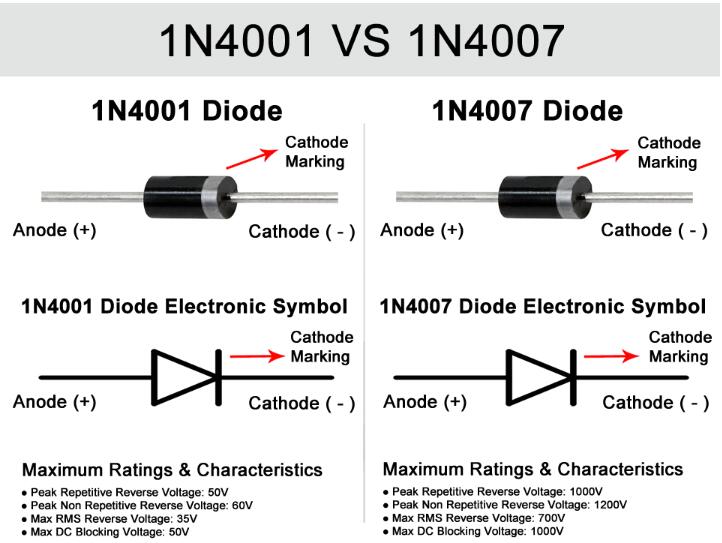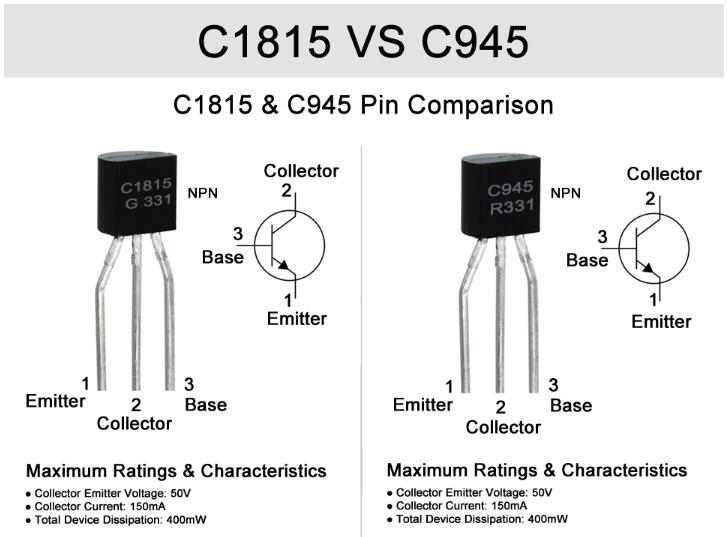The 1N4001 and 1N4007 are two commonly used general-purpose diodes, and while they share some similarities, there are also important differences to consider. Here's a discussion on the dissimilarities, similarities, and interchangeability between these diodes:

Differences:
-
Maximum Reverse Voltage (VRRM): The primary difference between the 1N4001 and 1N4007 lies in their maximum reverse voltage ratings. The 1N4001 has a VRRM of 50 volts, while the 1N4007 has a significantly higher VRRM of 1,000 volts. This difference in voltage rating makes the 1N4007 suitable for applications involving higher voltage levels.
-
Peak Forward Surge Current (IFSM): Another key distinction is in their peak forward surge current ratings. The 1N4001 typically has an IFSM rating of 30 Amperes, while the 1N4007 has a higher IFSM rating of 70 Amperes. This means that the 1N4007 can withstand larger surge currents, making it more robust in applications with higher current spikes or transients.
Ratings & Characteristics Comparison:
| Ratings & Characteristics | 1N4001 | 1N4007 |
|---|---|---|
| Max Repetitive Reverse Voltage (VRRM) | 50V | 1000V |
| Average Rectified Forward Current (Io) | 1A Or 1000mA | 1A Or 1000mA |
| Max Forward Voltage (VF) | 1.1V | 1.1V |
| Power Dissipation (PD) | 3 Watts | 3 Watts |
Similarities:
-
Forward Voltage Drop (VF): Both the 1N4001 and 1N4007 have similar forward voltage drop characteristics. The typical forward voltage drop for both diodes is around 0.7 volts. This means that when conducting current under forward bias, they will exhibit a similar voltage drop.
-
Forward Current (IF): Both diodes have comparable forward current ratings. They are typically rated for a continuous forward current of 1A (Amperes) or 2A, depending on the manufacturer. This means they can handle similar levels of current flow without any significant differences.
Interchangeability: The 1N4001 and 1N4007 can be considered interchangeable in many low to moderate voltage applications, particularly when the maximum reverse voltage and peak forward surge current requirements are not critical. However, it's important to note that the 1N4007 offers a much higher voltage rating and surge current capability, making it more versatile and suitable for a broader range of applications compared to the 1N4001.
When determining interchangeability, it is advisable to consult the datasheet provided by the manufacturer to ensure compatibility and adherence to the specific requirements of your circuit or system.
Remember to consider other factors such as power dissipation, temperature limitations, and the specific needs of your application when selecting the appropriate diode to ensure reliable and optimal performance.


